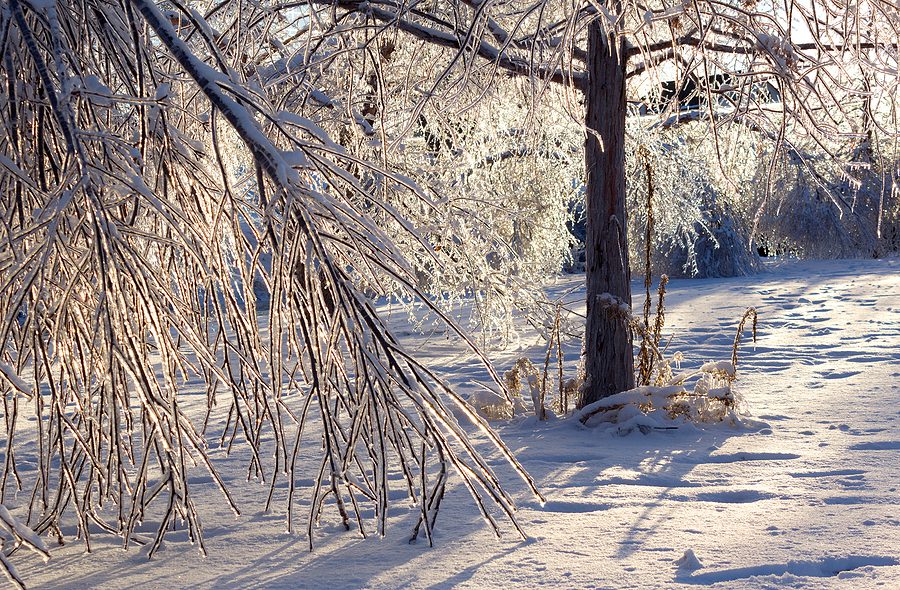Top Tips for Winter Snow and Ice Damaged Trees

The trees and other landscape around your house may sustain significant damage from heavy snow and ice throughout the winter months. Here in Albuquerque, winter brings broken branches, split-off trees, sagging trees, and even fallen trees. Even though you regrettably have no control over the weather, you can act now to support your trees’ springtime recovery.
Here are some pointers for assessing the damage done to your trees and starting the cleanup after the winter:
Clean up immediately after a storm
Make sure there are no downed power wires before you go outdoors. Avoid approaching any that you come across! Instead, report it by giving your electric provider a call immediately away. One of the first things to take care of after a storm is damaged or fallen power lines, as well as those entangled in tree branches, which pose a serious risk.
Then, keep an eye out for any broken tree branches that are hanging over your house, the driveway, other buildings, or other places where people are probably going to be. Professional tree care should take care of these safety risks right away.
Report the issue by calling your local public works agency or the non-life-threatening emergency number if there are any trees or limbs obstructing the sidewalk or road.
Examine your trees for evidence of damage
After a severe snowstorm, freezing rain, or winter storm, examine every tree on your property. To make sure your trees are secure and prepared for spring development, you should also do this examination at the end of winter. With the added weight of spring foliage, any structural problems with your trees will become more noticeable—and maybe dangerous.
Before spring arrives and after a winter storm, keep an eye out for the following:
- Dangling branches: Avoid trees with dangling branches since they may fall at any moment.
- Broken limbs
- Ripped bark
- Branches and trees bowed due to the weight of ice or snow.
- A tree that has split apart; multi-stemmed trees and Bradford pears are notable examples of this.
- Any indications that a tree is tilting, or a tree that is obviously tilting.
- The leader, or primary ascending branch, is broken or absent.
- Damaged or broken cabling (it might be hard to assess them without doing a closer investigation)
- Cracked or split branches (these may not be apparent from the ground)
There may probably be some damage that is visible, such limbs that have fallen and covered your grass, but most of it won’t be. You may presume that there is further concealed damage if any of your trees have visible damage from winter storms. For a complete assessment, it is thus always preferable to bring in a tree care expert.
Look for signs of salt burn before spring officially arrives
Your trees could have been exposed to salt spray from passing automobiles if they are close to a road. Additionally, as the snow melts and seeps into the ground, trees that are close to places where driveways and sidewalks are piled high will be exposed to salt.
Trees lack the defensive systems required to shield themselves from the damaging effects of salt. While some damage doesn’t show up until later in the year, keep an eye out for indications of salt damage in the spring and throughout the growth season.
Winter salt damage often manifests as brown, dead leaves and needles on evergreens. This will start to show in the winter on trees that are exposed to salt spray from surrounding highways. The branches become naked as the trees begin to lose their leaves and/or needles over time. Here are some of the symptoms indicating salt injury in trees:
- Discoloration of leaves
- Thin crowns along with sparse leaves
- Dying branches or twigs
- Smaller leaves having scorched margins
- Early color changes during fall
- Small growth rings
- Foliage clumping
Here in the northeastern Albuquerque region, salt damage is an inevitable part of winter living, no matter how hard you try. However, there are steps you can do to lessen the extent of damage to your perennials, shrubs, and trees.
